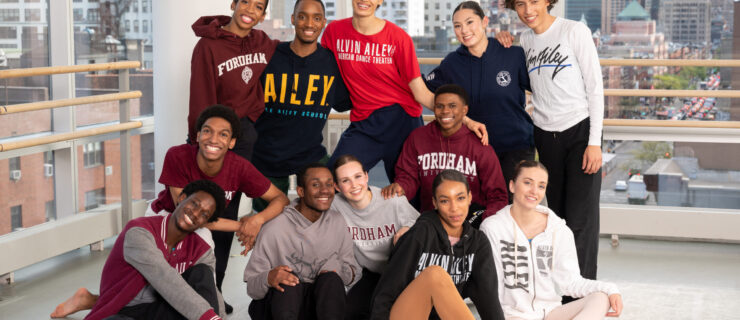Let's Get Physical: How and Why to Take Advantage of Your College's PT Resources
At first, visiting your school’s physical therapist is like visiting a foreign country. It sometimes feels as though PTs are speaking a totally different language. (“Wait, what did she just say about my tendonitis?”)
With time, you’ll come to understand that physical therapy is one of your school’s most valuable resources, whether or not you’re injured. College is an incredible (and unique) time in your dance career where you have unlimited access to qualified physical therapists. But in case you’re still feeling a little culture shock, we talked to the experts about how to make the most of your visit.
How to Know When to Go
Long story short, there’s no wrong time to visit your school’s physical therapist or athletic trainer. While, of course, it’s important to seek help from a professional if you’re injured, you might want to make time for a consultation even if you think nothing’s wrong.
“A lot of times, you can get muscle imbalances without even noticing until they start to cause a different issue,” says Whitney Rowley, licensed athletic trainer and adjunct professor at Point Park University. “Certain choreography might be heavier on one side or leg, so there’s a lot more force on that side—we can try to balance those things out.”
Rowley emphasizes the difference between an injury and a complaint: A complaint is when you start to feel pain but it doesn’t necessarily result in time lost from dancing. An injury is when that pain escalates, resulting in time lost—even one day off from normal activity. “Don’t wait for it to become an injury,” she says. “Come in when it’s a complaint.”

Asking the Right Questions
Garfield Lemonius, chair of the dance department at PPU, says to think about the big picture, not just about your current injury or the performance you’re gearing up for. “It’s an overall approach to prepare you for an art form which is only going to get more demanding as you get to be a professional,” he says. “What do you need to prepare yourself for a career in dance?”
He suggests working with your physical therapist or athletic trainer to further develop a true understanding of how the body works. Ask questions about anatomy and physiology, and about medical jargon you might not understand.
In order to best take advantage of the resources available to you, Rowley recommends doing research beforehand. “Look up the professionals at your college, look at their certifications, and if you see someone with a certification that’s applicable to you, go in and ask about it.” And of course, any physical therapist who lists prior dance medicine experience is going to be a major asset.

The Most Common Mistakes—and How to Avoid Them
Like Rowley says above, the biggest mistake is waiting too long to meet with a PT or trainer. “We try to educate freshmen especially, just coming in, that if you start to experience pain, you should come in right away,” Rowley says. “But we definitely still have students coming in and saying ‘Oh, three weeks ago this started hurting, and now it’s too painful to dance.'”
She adds, “Another big thing is that a lot of people come in with an injury that they dealt with before college, that they let go over the summer. They show up for fall semester and think it’ll work itself out—it almost never does.”
The most important thing is to be proactive. College is a rare moment in your dance career that you’ll have consistent access to many qualified physical therapists and athletic trainers. One of the biggest mistakes you can make is not recognizing how valuable this can be.
“Use it or lose it,” Lemonius says. “When you have these resources available to you, you don’t take them for granted.”




